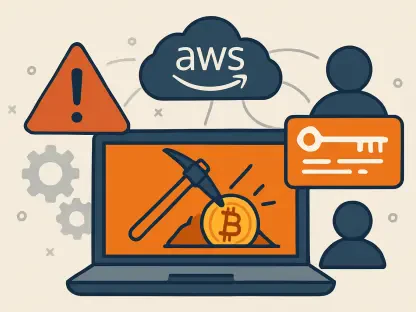The advancing landscape of technology is set to propel the risk analytics market towards unprecedented growth. With innovations in artificial intelligence (AI), machine learning, and advanced computational power, organizations are poised to refine their risk management approaches. This analysis examines the pivotal role of cutting-edge technologies in driving market expansion. As these technologies evolve, they enable more accurate risk assessments, refined predictive analytics, and enhanced data processing capabilities, transforming the way organizations understand and manage potential threats.
Technological Revolution in Risk Analytics
Engineering breakthroughs have equipped organizations with the capability to handle immense datasets in real-time. The emergence of powerful computing systems allows for complex risk calculations and visualizations that were previously unattainable. This technological edge enables businesses to pivot swiftly in response to potential threats. Real-time data processing and analysis allow companies to quickly identify and address risks, reducing the likelihood of adverse outcomes and improving overall organizational resilience.
AI and machine learning play an instrumental role, transforming raw data into actionable insights. By leveraging these technologies, companies can predict potential risks with remarkable accuracy, developing proactive strategies to mitigate threats effectively. Machine learning algorithms can analyze historical data to identify patterns and trends, enabling organizations to anticipate future risks and take preemptive measures. This forward-looking approach not only enhances risk management but also supports strategic decision-making and long-term planning.
Fostering Regulatory Compliance
Complex regulatory requirements have amplified the need for advanced risk analytics. Industries are navigating a labyrinth of compliance mandates that necessitate seamless integration of sophisticated risk management solutions. Employing tech-driven analytics ensures adherence to regulations, thereby averting hefty penalties. This is particularly crucial in highly regulated sectors such as finance, healthcare, and insurance, where non-compliance can result in significant financial and reputational damage.
AI and machine learning strategies provide sharper tools for regulatory compliance by continuously monitoring and analyzing compliance-related data. Automated alerts and real-time assessments assist organizations in meeting the ever-evolving regulatory landscape. These technologies can identify deviations from regulatory standards and prompt timely corrective actions, thus minimizing the risk of non-compliance. Moreover, they offer comprehensive documentation and reporting capabilities, facilitating transparent and efficient regulatory audits.
The Growing Cybersecurity Imperative
Amid escalating cyber threats, risk analytics is more vital than ever for safeguarding sensitive information. Cybersecurity incidents pose significant risks, and the strategic deployment of advanced analytics can thwart these threats. Incorporating AI-driven solutions helps detect anomalies and vulnerabilities before they become critical issues. These analytical tools can identify suspicious activities, monitor network traffic, and flag potential security breaches, enabling organizations to respond swiftly and effectively.
Organizations can maintain stakeholder trust by integrating robust cybersecurity measures through risk analytics. This proactive stance against cyber threats not only fortifies data protection but also supports the continuity and reliability of business operations. By leveraging advanced analytics, companies can develop comprehensive cybersecurity strategies that address current and emerging threats, ensuring ongoing protection of their digital assets and maintaining the trust of customers, partners, and regulators.
Deployment of Risk Analytics Technologies
The transition from on-premises to cloud-based platforms is a significant trend in the risk analytics market. Cloud technologies offer scalability and cost-effectiveness, facilitating broader adoption among organizations of various sizes. Enhanced data accessibility and collaborative tools offered by cloud solutions create a dynamic risk management environment. Cloud platforms enable seamless data integration, real-time analysis, and interdepartmental collaboration, fostering a more cohesive and efficient approach to risk management.
Small to medium-sized enterprises (SMEs), in particular, benefit from cloud-based platforms. These solutions enable SMEs to deploy advanced risk analytics without substantial infrastructure investments, thereby leveling the playing field with larger competitors. Cloud-based risk analytics tools can be rapidly deployed and customized to meet specific organizational needs, allowing SMEs to effectively manage risks and capitalize on emerging opportunities while maintaining financial prudence.
Diverse Industry Applications
Different industries exploit risk analytics to cater to their specific needs. The banking and financial services sector leads in adopting these technologies to manage credit, market, and operational risks. Sophisticated analytics tools allow for detailed risk profiling and mitigation strategies. These tools enable financial institutions to assess the creditworthiness of clients, monitor market fluctuations, and ensure operational continuity, thereby reducing exposure to potential losses.
Other sectors, including insurance, healthcare, manufacturing, retail, and government, are also keen adopters of risk analytics. Each industry tailors these solutions to address unique operational challenges and compliance requirements, leveraging data-driven insights to enhance decision-making processes. For instance, the healthcare sector uses risk analytics to manage patient data security and regulatory compliance, while the manufacturing sector employs these tools to optimize supply chain management and mitigate production risks.
Regional Market Dynamics
The United States, with its stringent regulatory frameworks and mature financial sector, leads the global risk analytics market. Meanwhile, Germany’s focus on regulatory compliance and China’s rapid digital transformation place these nations at the forefront of tech-driven risk management advancements. These countries have made significant investments in advanced risk analytics technologies to navigate complex regulatory landscapes and ensure economic stability.
The UK’s financial services industry emphasizes the importance of risk analytics for navigating regulatory and geopolitical uncertainties, especially in the context of Brexit. Concurrently, India’s burgeoning digital economy sees increasing investments in risk analytics to combat emerging cybersecurity threats. These regional dynamics highlight the critical role of risk analytics in enhancing global economic resilience and driving technological innovation across diverse markets.
Competitive Landscape
Key market players, such as IBM, SAP SE, SAS Institute Inc., Oracle Corporation, and Accenture PLC, dominate the competitive landscape. These companies continually innovate, enhancing their offerings to meet evolving market demands. Strategic partnerships and acquisitions fortify their market positioning, ensuring they remain at the technological vanguard. These market leaders leverage their extensive expertise and resources to develop cutting-edge risk analytics solutions that address the unique needs of different industries.
Noteworthy developments include IBM’s AI-enhanced predictive risk solutions and SAP’s integration of risk analytics with enterprise resource planning. SAS’s specialized financial services tools, Oracle’s scalable cloud-based solutions, and Accenture’s comprehensive service expansion underscore the sector’s dynamic growth. These innovations reflect the ongoing commitment of leading firms to drive the advancement of risk analytics technologies and deliver superior value to their clients.
Continuous Innovation and Development
Continuous innovation in AI and machine learning is a hallmark of the risk analytics market. Recent advancements are focused on refining predictive capabilities and enhancing the functionality of analytics tools. This ongoing development is crucial in adapting to the fast-changing business landscape. As new risks emerge and existing risks evolve, these technologies provide organizations with the agility and foresight needed to navigate complex and uncertain environments.
Furthermore, the expansion of cloud-based platforms and the increased specialization of risk analytics tools cater to specific industry needs. This trend signifies a shift towards more personalized and effective risk management solutions that address distinct operational risks. By tailoring risk analytics technologies to meet the unique challenges of different sectors, companies can achieve greater precision, efficiency, and effectiveness in their risk management efforts.
Conclusion: Navigating Future Complexities
The rapidly evolving landscape of technology is on track to drive significant growth in the risk analytics market. With breakthroughs in artificial intelligence (AI), machine learning, and advanced computational power, organizations are positioned to enhance their risk management strategies. This analysis explores the critical role of these innovative technologies in fostering market expansion. As AI and machine learning technologies advance, they facilitate more precise risk evaluations, improved predictive analytics, and superior data processing capabilities. This revolutionizes the way organizations identify, understand, and manage potential risks. Enhanced data processing, enabled by cutting-edge technologies, allows for quicker, more efficient analysis, ensuring businesses stay ahead of potential threats. Ultimately, these technological advancements are poised to transform risk management, offering organizations the tools needed to navigate and mitigate future challenges effectively.









